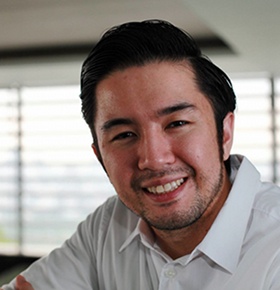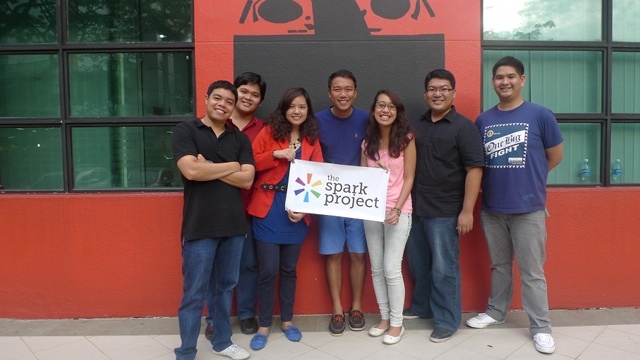SUMMARY
This is AI generated summarization, which may have errors. For context, always refer to the full article.

Filipinos have arguably been doing crowdfunding before there was “crowdfunding.” Filipinos famously turn to their friends and family for loans or investments to start a small or micro business.
Crowdfunding sites like Kickstarter and Indiegogo allow business and social entrepreneurs to multiply the reach of their “ask” for capital. They get our campaigns heard.
The Spark Project attempts to achieve this in the unique context of the Philippines. I recently spoke with its founder, Patch Dulay, on how to run a successful crowdfunding campaign in the Philippines.
He spoke of the need to be familiar with the 3 types of backers — project advocates, project patrons, and walk-ins — and to tailor your campaign rewards to each of them. You should also encourage people who cannot necessarily donate, such as student volunteers, to contact you directly.
As Filipinos may be skeptical of any “ask” for money due to our cultural history, it’s crucial to remain transparent on a campaign page as well as across social media platforms.
He said you should engage with people there during a campaign as well as after it to make them feel personally invested in your progress.
As for the overall goal, you should choose one that is simultaneously inspirational to your backers yet achievable within the context of a crowdfunding campaign. More often than not, Filipinos are compelled by “bayanihan” spirit to rally around causes (or in our case, campaigns) that they believe in.
Here are snippets from our chat:
How much does crowdfunding expand the reach of the “ask” for capital?
Crowdfunding leverages the virality of social media and the convenience of e-commerce. It allows grassroots innovators to take matters into their own hands and raise funding for their projects. Banks and investors are good – don’t get me wrong – especially during certain stages of a startup’s life. But crowdfunding allows these innovators to not be too dependent on these when deciding whether their project should push through.
Crowdfunding isn’t for everyone. Those considering to crowdfund must be ready to be transparent. Crowdfunding is a very public way of raising funds where you open your idea (even yourself) up for people to decide whether or not they would support it or not. It’s a double-edged sword which can either make you or break you publicly. But a well conceptualized crowdfunding campaign done with proper preparation is greatly rewarding.
What’s the first step in launching a successful crowdfunding campaign?
Apart from the basics like establishing a funding goal as well as a funding duration, you need to think of the rewards you would give your backers in exchange for their support. These rewards are usually outputs from the project like tokens, memorabilia, unique experiences, and even the actual product.

What kind of backers do campaigners need to be familiar with?
You can expect 3 types of backer during your campaign:
Project advocates. These are usually your family and friends who would go out of their way to share your project online, believe in the bigger cause of a project, and give the largest funding amounts.
Product patrons. These people give their support because of the product the project offers. They are early adopters who are willing to support the project to gain access to the product before anyone else does. They are particular with the specifications and the level of quality at which the project is executed.
Walk-ins. These are people who stumble upon your campaign, but after watching your video and reading your pitch, would want to help out. They casually give and usually choose the lowest backing amount and are compelled to give because the reward the project offer for this tier is cool and attractive.
How important is it to tailor a reward to a particular kind of backer?
Very. While preparing for their campaign for a canvas camera bag, Gouache founders Anne Enriquez and Louie Poco were targeting product patrons as their biggest demographic.
They highlighted the design and functionality of the waxed canvas bag. They also came up with a reward that would be hard to resist: the bag at 30% less than the planned retail price. More than 92% of those who backed the project chose this reward.
What elements in a crowdfunding campaign do you need to entice these various backers?
Projects that have a video pitch featuring the creators increases the chance of a favorable response. The written pitch supplements the video since the video can’t communicate everything you want to say.
Once you’ve caught their attention, the text should give more information about the project and its creators. For projects that are product-centric, product specifications are important. For projects such as events, venue details are needed.
All write-ups should ideally answer the key questions – who are the people behind the project, why are they doing this, the reason behind the project, where will the money be used (an itemized breakdown of funds is advised), what are the specifics of this project, and how and when will the rewards and the project be completed and delivered.
Throughout the campaign, the project must be able to show their ability to execute and deliver. Having a prototype or track record would help increase their credibility as a project. For instance, Risque Designs by Kristal de Guzman showed links to previous her work collections and sketches of the upcoming Animalia Collection which she was funding for through The Spark Project.
As the national language of the Philippines is both English and Tagalog (Filipino), which language do you recommend that campaign materials be in?
All of our projects used English as their main language of communication. It’s good to use English because it can be understood by more people abroad. But if the campaigners don’t feel comfortable using English, it’s fine. For the Kawil project, Filipino was used by the stakeholders interviewed from Culion, Palawan. Speak in a language that you are comfortable in. You can always add subtitles so that people from other countries can understand.
Filipinos may be skeptical or wary of any “ask” for capital because of the history of corruption and misappropriation of funds in this country. How do you recommend that campaigners reduce skepticism and even get people to buy into their vision?
Be as transparent as possible. Show your face, provide a way for you to be contacted, and build a relationship with your backers among others. When you introduce yourself in the video or on the write-up, also state what your outfit is. Route +63 explicitly said that they are a social enterprise in their video pitch.
Crowdfunding is a very public way of raising funds online where you let the crowd validate or invalidate the outcome of your project. So if you do something sketchy, or fail to deliver what is expected, people can use the Internet to rally against you. But if you do something inspiring and noteworthy, social media can make you an instant hero, like the Elevator Girl from Olongapo (READ and WATCH: Elevator girl inspires on social media). And once it’s over the Internet, it will stay there, and stay there forever.
The same rules go with crowdfunding, since it leverages the Internet and social media. So use it wisely.
How can you enhance your online reputation so that it will contribute to the transparency of your campaign?
Make your social profiles accessible online (not hidden). Potential backers, especially walk-ins, want to know whether you are a real, legit person.
Populate your social media profiles with relevant information about your organization and company. Almost all our projects — Paint Some Happy, Muni PH, Offbeat Pursuits — had a fan page and Twitter accounts to direct people to more information about their projects. – Rappler.com
Rappler business columnist Ezra Ferraz graduated from UC Berkeley and the University of Southern California, where he taught writing for 3 years. He now consults full-time for educational companies in the United States. He brings you Philippine business leaders, their insights, and their secrets via Executive Edge. Follow him on Twitter: @EzraFerraz
READ:
[Executive Edge] Building your social media presence
[Executive Edge] Making your pitches come alive
[Executive Edge] Revolutionizing the BPO industry
[Executive Edge] The business of elite security
[Executive Edge] Filipino innovator’s dilemma
What do bitcoin and remittances have in common?
Add a comment
How does this make you feel?
There are no comments yet. Add your comment to start the conversation.